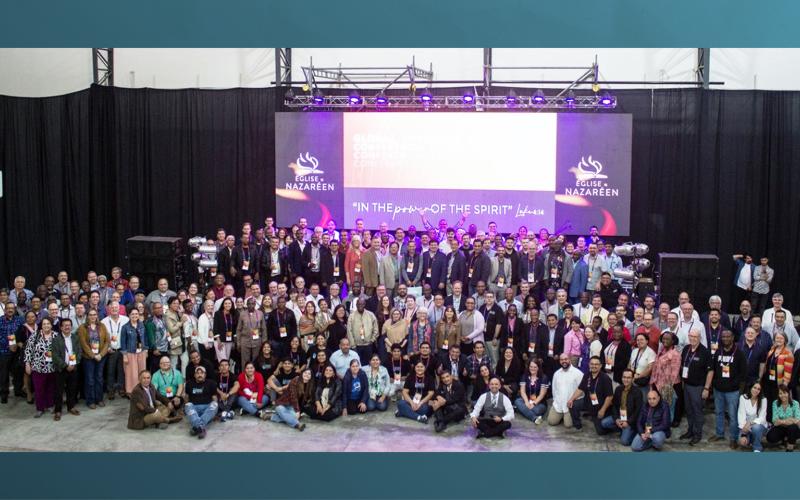
Nazarene churches establish more than 100 schools in DRC

Jacques Balibanga recalls the dire situation when the Church of the Nazarene first entered the Democratic Republic of the Congo.
“In 1990, there were many conflicts in the eastern DRC," said Balibanga, previously district superintendent to the churches in Central North Kivu, and now the education coordinator for the Africa Central Field. "Many people ran from the violence in their villages and came to stay here in Goma. There was a big number of kids without parents. Some of them were orphans and others didn’t know where their parents went.”
In addition to these problems, there were too many children without proper education, and there were not enough schools in the DRC for them.
Local and national Nazarene leaders decided that building and running local schools was something they could do to meet this need to contribute to their society, according to Gavin Fothergill, missionary and coordinator of the Africa Central Field of which DRC is a part. The first school, in Goma, was named the Zanner Institute (after former Africa Regional Director Richard Zanner). Today it is one of the top schools in the area, with graduates working in various fields.
But they wanted to reach more children than one school could take on.
Today, there are 110 schools sharing the gospel and educating students in the seven Nazarene districts of the DRC. This number continues to grow.
Each school is associated with a Nazarene church nearby. Church members often serve on the board and assist in starting schools. The finished buildings are sometimes used for district events. Before a school can open, a church must obtain the land, government registration, competent teachers, supporting donors and equipment. Once they are up and running, these schools have a strong impact on surrounding communities.
“When you’re able to point to a good school that is serving its community and providing good and affordable education, and say, ‘That’s our school,’ the people take the church more seriously,” Fothergill said.
The government allows all registered schools to teach according to their denomination’s beliefs. Nazarene schools encourage students to ask questions, read their Bibles, and participate in group discussion. Outside of the school, many share what they’ve learned with their families.
“We decided to fund the school, to have a space where we can share our genuine faith, to provide a space for students to ask tough questions, to struggle with the answers, to experience grace, and to live out their developing faith, trusting in the love and guidance of Jesus Christ,” Balibanga said.
Through the outreach of the schools, students have also been baptized. Some who were not previously believers now declare their faith in Jesus Christ and have joined the Church of the Nazarene. School chaplains disciple students, and they are then encouraged to become spiritual leaders by leading discipleship programs in classrooms.
“I do think the church can see these are children who we know we’re invested in and because we’re invested in them, they turn and come to church,” Fothergill said.
In these schools, students not only grow spiritually, but many continue their education in institutions of higher learning and enter a vocation. This year, in total approximately 15,153 students are studying in Nazarene primary and secondary schools, the latter of whom are studying business administration, informatics, literature, pedagogy, social science, and commercial studies.
Despite these victories, there are struggles. The cost of education is about four dollars a month for each child in primary schools and about 10 dollars in secondary schools. Students and many families cannot afford even this to send their children to school. Often, they arrange to pay for schooling with crops or livestock, and sometimes difficult decisions have to be made. According to Fothergill, the church must decide whether or not to keep students in school by accepting them for a reduced rate.
Fothergill believes that families who invest something in their children’s education receive more from it.
“If a parent or a child is able to sacrifice and pay for their education, they probably appreciate it that much more and will be more serious about it than if it was given to them [for free],” Fothergill said.
While the DRC schools deal with these issues, as well as struggling to find the funds to build strong, durable buildings, and reaching families in the center of the country, the Nazarene church strives to maintain them for the spiritual and academic formation of the children of the Congo.
A child who studies in a Nazarene school from the age of 6 to their graduation at 18 will learn about the message of holiness throughout their formative years, Balibanga said.
“I have seen many graduate who have decided to become Nazarene and others continue to visit the church because of their experience at Nazarene schools. We have also some who are in ministry and many have joined the Nazarene local congregation because [they] have been taught about the Church of the Nazarene from one of the schools.”



